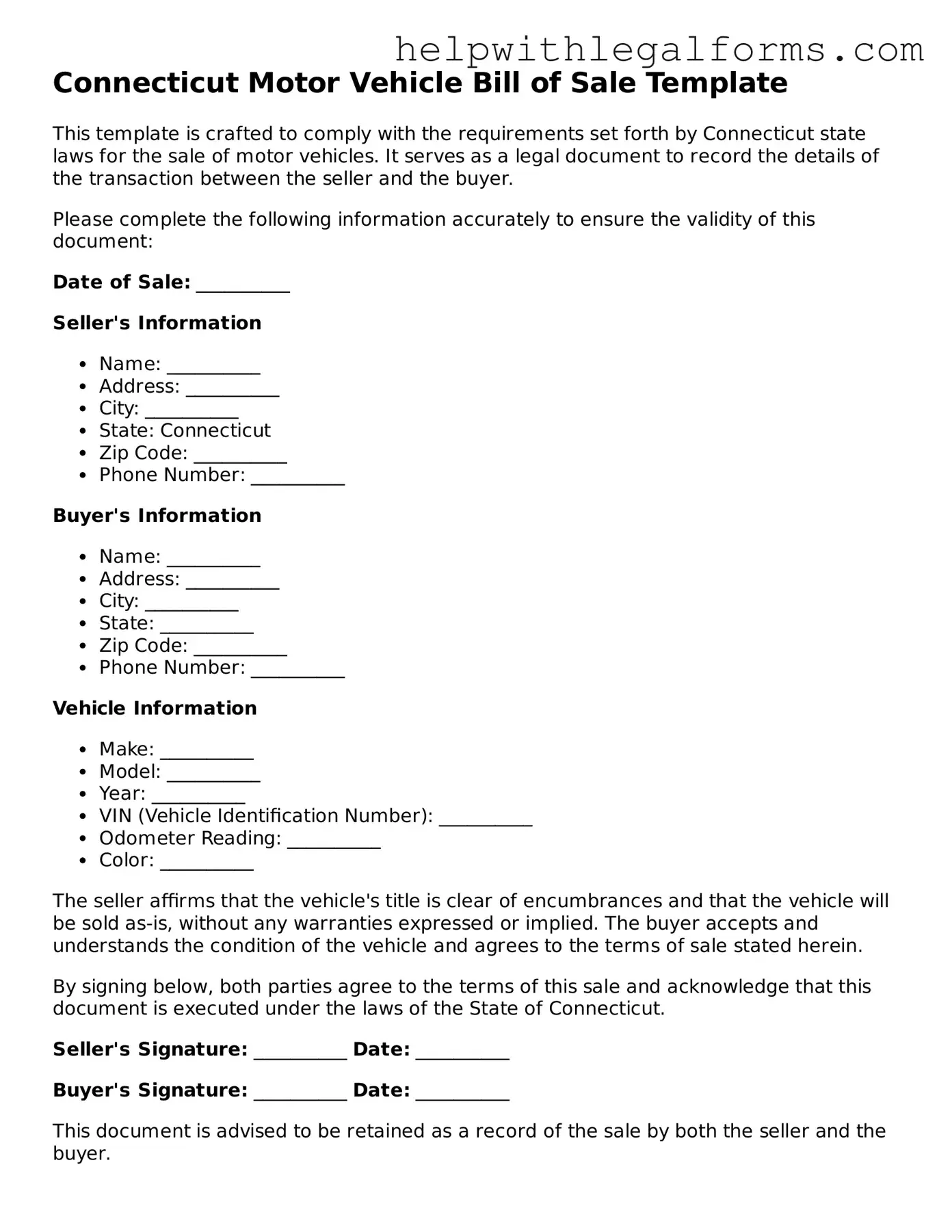What is a Connecticut Motor Vehicle Bill of Sale?
A Connecticut Motor Vehicle Bill of Sale is a legal document that records the sale of a vehicle from one party to another in the state of Connecticut. It details the transaction and provides proof of the change in ownership, including information about the seller, buyer, and the vehicle itself.
Is a Connecticut Motor Vehicle Bill of Sale required for the sale of a vehicle?
Yes, it is highly recommended to complete a bill of sale when selling a vehicle in Connecticut. It serves as important evidence of the transaction for both the buyer and the seller and is required for the buyer to register the vehicle.
What information needs to be included in a Connecticut Motor Vehicle Bill of Sale?
The bill of sale must include the full names and addresses of both the buyer and the seller, the vehicle’s make, model, year, VIN (Vehicle Identification Number), the sale date, and the purchase price. Signatures of both parties are also needed to validate the document.
Do both parties need to sign the Connecticut Motor Vehicle Bill of Sale?
Yes, both the buyer and the seller must sign the bill of sale. Their signatures confirm that the information provided is accurate and that they agree to the terms of the sale.
Does the Connecticut Motor Vehicle Bill of Sale need to be notarized?
Notarization of the bill of sale is not a requirement in Connecticut for it to be considered valid. However, having it notarized can add an extra layer of legal protection and authenticity to the document.
How does a Connecticut Motor Vehicle Bill of Sale protect the buyer and seller?
For the seller, it provides proof that the vehicle was sold "as is," potentially limiting liability if problems arise with the vehicle after the sale. For the buyer, it serves as a receipt for the transaction and is needed to register the vehicle, proving ownership.
What happens if a Connecticut Motor Vehicle Bill of Sale is not used?
Not using a bill of sale can lead to complications in proving ownership of the vehicle, transferring the title, and registering the vehicle. It can also result in disputes or liability issues for both parties involved in the sale.
How can one obtain a Connecticut Motor Vehicle Bill of Sale form?
The form can be downloaded from the Connecticut Department of Motor Vehicles (DMV) website or acquired at a local DMV office. Ensure it is filled out correctly and retains a copy for your records.
